The Balancing Act: A Full Rundown on the Balance Sheet Reconciliation Process
.webp)
As companies strive to best understand their financial information, they can gain the most clarity by performing a balance sheet reconciliation. Following balance sheet reconciliation, accounting & finance teams are equipped with the data needed to make informed decisions.
At Numeric, we work with companies like OpenAI, DailyPay, Plaid, Mercury, and more to revamp their reconciliation processes and narrow their close times.
This article cover the essentials of balance sheet reconciliations, offering clear steps, practical examples, and best practices to streamline the process and enhance financial accuracy.
What is Balance Sheet Reconciliation?
Balance sheet reconciliation is the process of verifying that the balances in your company's general ledger match the corresponding account balances in supporting documents for all balance sheet accounts. This process is crucial to ensure the financial statements are accurate and free of errors.
As a core part of the month-end close, it's necessary to understand both the importance of balance sheet reconciliation and how to effectively reconcile balance sheet accounts step by step.
Want a deeper dive into closing procedures? Explore our full guide to mastering the month-end close.
Why is Balance Sheet Reconciliation Important?
You might wonder if getting balance sheet reconciliations perfect is worth the effort. It absolutely is. Nailing this process helps provide real advantages that strengthen your whole business operation, going far beyond just checking off a task.
Building Trust Through Accuracy
Think of solid reconciliations as the foundation for trustworthy financial reporting. Why? Because accurate financial reporting is essential, it prevents costly missteps based on bad data. Ultimately, performing reconciliations consistently helps paint a true picture of your company's financial health.
Catching Mistakes Before They Grow
During reconciliation, you actively hunt down discrepancies and errors before they snowball. This might uncover transactions that were never recorded, simple typos, or items needing proper classification. Catching these issues early stops them from becoming much bigger headaches later.
Meeting Compliance Demands
Staying on the right side of financial regulations is non-negotiable. This reconciliation process helps you meet standards like GAAP or IFRS, ensuring regulatory compliance. Doing so consistently helps you steer clear of potential fines and legal issues.
Inspiring Confidence, Inside and Out
When your financial statements are accurate, it builds confidence, not just internally, but also with investors, lenders, and partners. Maintaining balance sheet integrity shows stability and professionalism, which can be key when seeking funding or favorable terms.
Plus, having reliable numbers fuels smarter decisions and definitely makes things smoother when external auditors arrive.
How Numeric Helps Accounting Teams with Balance Sheet Reconciliation
For many teams, a key step in overcoming reconciliation hurdles is implementing a dedicated reconciliation software. With Numeric’s reconciliation product, teams like Soundstripe have gained back hours of time in their close to then focus on more strategic business initiatives.
To see just how reconciliations operate in Numeric, see this preview from Numeric’s Head of Solutions, Eli Geschwind:
What key features make balance sheet reconciliations a breeze in Numeric?
- Streamline your balance sheet reconciliations: With Numeric, you can handle all your month-end balance sheet recs in one spot. The system automatically pulls account totals from workpapers and your GL's trial balance. Even better, with a deep ERP integration, Numeric users can click into underlying transactions across accounts to investigate. Numeric also monitors prior period balances, flagging any changes since your last reconciliation.
- Stay organized and audit-ready with clear controls and documentation: Numeric makes it easy to assign tasks to preparers and reviewers, and keeps track of all comments, changes, and submissions in a clear month-end close checklist. When audit time rolls around, auditors can log straight into Numeric and see a complete activity trail, no need for your team to spend hours resurfacing required documentation.
- Catch anomalies with flux analysis: Easily compare accounts MoM or QoQ to spot anomalies or layer in insights with auto-generated flux reporting. With Numeric, AI takes the first pass at writing variance explanations by combing through all transaction-details in an account and identifying key drivers of change.
- Set-up ongoing transaction monitoring: With Monitors, you can flexibly set-up ongoing alerts to catch errors ahead of month-end account reconciliations. Catch any transactions tied to particular customers or, for Controllers doing a quality check of the full month-end process, surface all journal entries booked to A/R to scan through.
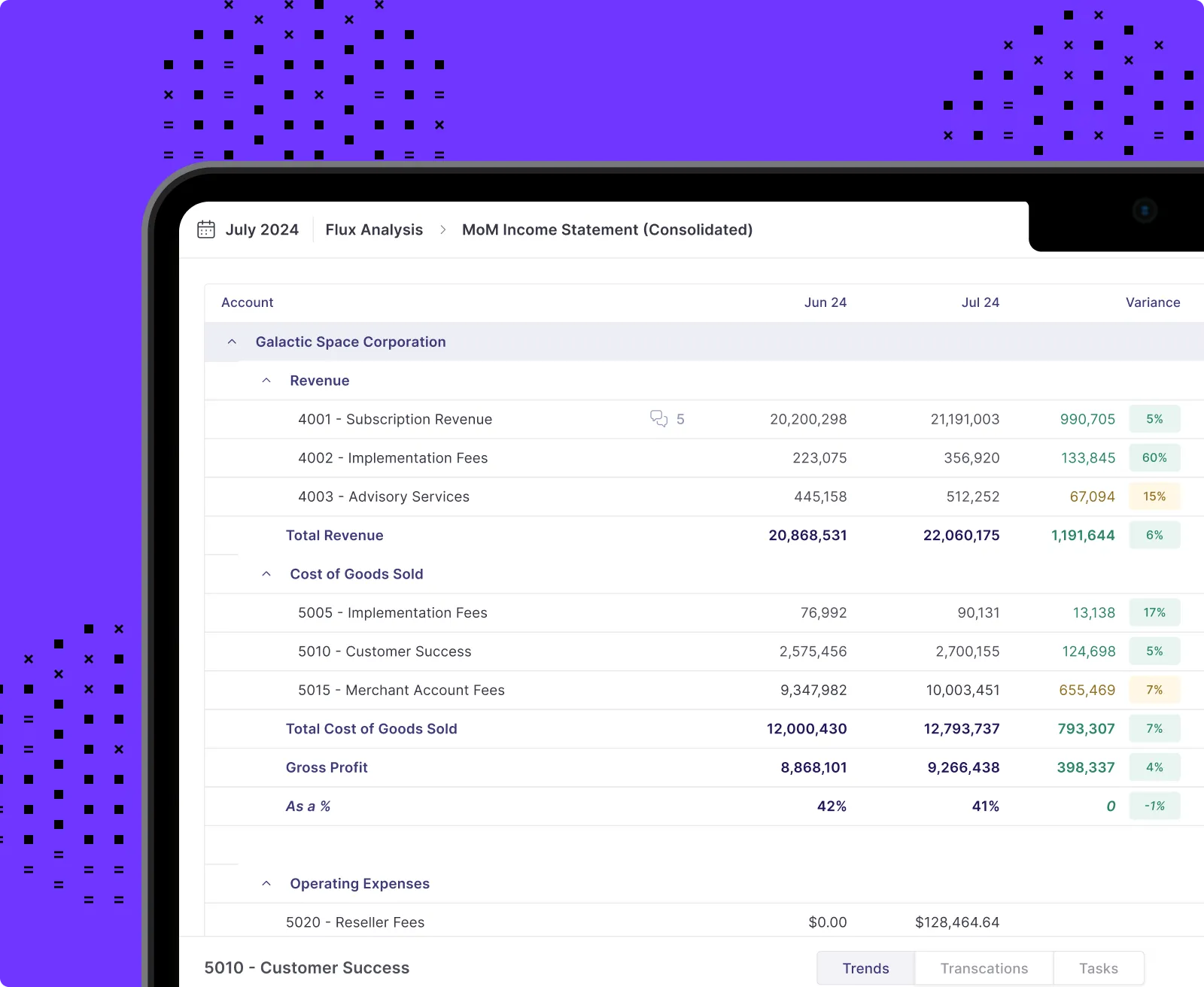
Types of Balance Sheet Reconciliations
The balance sheet reflects the accounting equation: assets = liabilities + equity. For complete balance sheet reconciliation, companies must reconcile the accounts nested under each of these three categories.
Assets
Assets are resources owned by a business. Reconciliations for assets include, but are not limited to:
- Cash Reconciliation: Ensures cash balances match bank statements for money available in bank accounts and on hand.
- Accounts Receivable Reconciliation: Matches the AR ledger balance with unpaid sales invoices for money owed to the business by customers.
- Fixed Asset Reconciliation: Compares GL trial balances with fixed asset subledger totals for long-term assets like buildings, machinery, and equipment. Includes an additional check for asset depreciation.
- Intangible Asset Reconciliation: Compares GL trial balances with amortization schedules for intangible assets.
Liabilities
Liabilities represent what the business owes. Key liabilities include:
- Accounts Payable Reconciliation: Matches AP Aging Report to GL trial balance
.- Accrued Liabilities: Compares journal entry listing of accruals to GL trial balance.
- Payroll Reconciliation: Ensures payroll records match amounts owed to employees.
Equity
Equity represents the business owners’ financial interest in the business. It includes:
- Common Stock, par Reconciliation: Ensures that the par value of common stock issued is accurately recorded.
- Additional Paid-in-Capital (APIC) Reconciliation: Verifies that any amount received from shareholders above the par value of stock is correctly accounted for.
- Preferred Stock Reconciliation: Ensures the accurate recording of preferred stock issued by the company.
- Accumulated Other Comprehensive Income Reconciliation: Confirms that all other comprehensive income items, such as unrealized gains or losses, are accurately reflected.
- Retained Earnings/Deficit Reconciliation: Ensures that all changes in retained earnings or accumulated deficits are accurately accounted for.
How Often Should You Perform Balance Sheet Reconciliations?
Regularly scheduling balance sheet reconciliations is crucial for keeping financial records accurate.
For balance sheet accounts, many companies typically start by reconciling around 70% of these accounts monthly, but full balance sheet reconciliations are necessary during audits.
First, focus on reconciling core accounts. Then over time as the company matures, aim to increase the percent of accounts reconciled to ensure full confidence in your balance sheet.
Step-by-Step Guide: How to Perform a Balance Sheet Reconciliation
Step 1: Identify Key Accounts for Balance Sheet Reconciliation
Start by pinpointing the key accounts that need reconciliation.
These accounts form the basis of your balance sheet reconciliation process. Identifying them ensures you cover all critical areas where discrepancies might occur. Often companies will start with core accounts like cash, deferred revenue, payroll, and AR/AP.
Step 2: Gather Documents for General Ledger Reconciliation
Collecting the right documents is crucial:
- General Ledger: This is your primary source of financial data. For each account, you’ll want to download the trial balance.
- Supporting Documents: These include bank statements, workpapers, or downloaded reports you’ll use to substantiate the recon.
For teams on Numeric, the trial balance and supporting document total will auto-populate each month, no need to download.
Having accurate and comprehensive records helps in cross-verifying transactions and balances. Without these documents, reconciliation becomes guesswork, leading to potential errors.
Step 3: Compare General Ledger to Supporting Documents
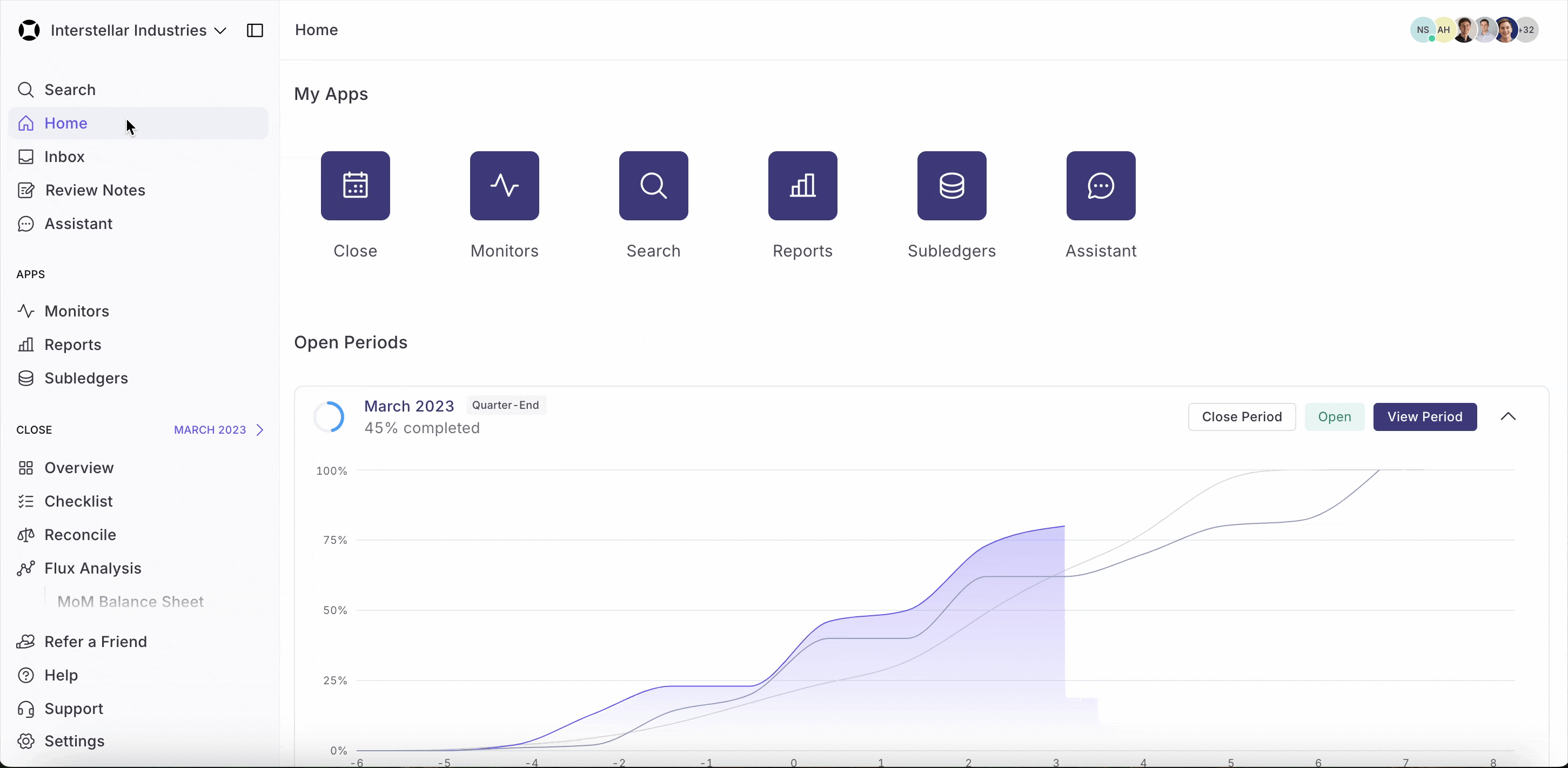
With all documents in hand, the next step is comparison: compare the total from your general ledger with the supporting documents. If the totals in your workpapers tie out with the GL, then you can assume that the corresponding account is balanced. If not, you’ll have to look for any mismatches between the ledger entries and the supporting sources.
If using Numeric for balance sheet reconciliation, you’ll have a single report for all reconciliations and any differences above the materiality threshold you set proactively flagged. Then you can drill directly into transactions to pinpoint any discrepancies.
Step 4: Investigate Discrepancies in Balance Sheet Reconciliations
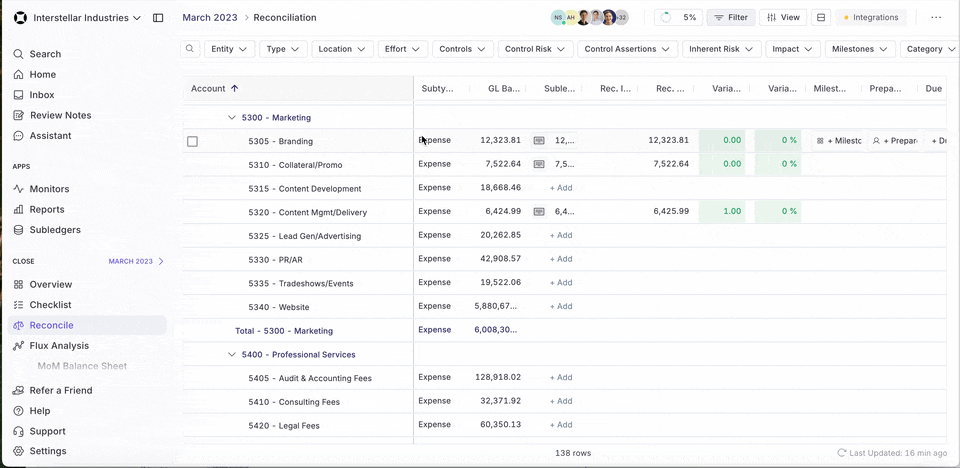
When you find discrepancies, it's time to dig deeper:
- Review Transaction Records: First, review the account's transaction history for the relevant accounting period to find the discrepancy.
- Contact Vendors or Customers: Sometimes, you may need to reach out to external parties to clarify issues.
- Examine Internal Practices: Look into your own accounting processes to identify any procedural errors. Did the preparer forget to make an adjustment? Were journal entries recorded incorrectly or duplicated?
Understanding the root cause of discrepancies helps in correcting them accurately and preventing future occurrences.
Step 5: Adjust the General Ledger Based on Reconciliation Findings
After identifying the discrepancies, you need to adjust the ledger:
- Journal Entry Adjustments: Make the necessary changes by adding, removing, or correcting entries.
- Update Balances: Ensure that the updated entries reflect accurate balances.
These adjustments correct the discrepancies, ensuring that your financial statements are accurate. Proper journal entries are essential for maintaining the integrity of your financial records.
Step 6: Finalize and Document the Balance Sheet Reconciliation
The final step is to wrap up the reconciliation:
- Ensure Matching Balances: Confirm that the ending balance on the general ledger matches the supporting workpapers for each account.
- Document the Process: Create a detailed report or summary of the reconciliation process.
Documenting the reconciliation is vital for future reference and audits. It provides a clear trail of the steps taken and the adjustments made, ensuring transparency and accountability in your financial reporting.
For teams on Numeric, a full audit trail of preparer, reviewers, comments, and action taken will automatically be stored.
Example of Balance Sheet Reconciliation in the Real-World
Sarah works as a senior accountant for GreenLeaf Enterprises, a sustainable energy company. One of her monthly tasks is to reconcile the company's balance sheet accounts to ensure accuracy in the financial statements.
- Gather Relevant Documents and Ledgers: At the end of each month, Sarah collects relevant documents such as bank statements, loan statements, and investment records, and accesses the company's general ledger, which records all financial transactions.
- Compare Balances: Sarah ensures that the balances in the external documents match what has been recorded in the company's general ledger. If there are discrepancies, she compares individual transactions to identify misalignments.
- Identify Discrepancies: During the reconciliation process, she may identify discrepancies such as:
- Transactions recorded in the general ledger but not reflected in the external documents
- Interest or fees reflected in bank statements but not recorded in the company's books
- Errors in transaction amounts or dates
- Adjust for Timing Differences: Timing differences can occur due to processing delays between the company and financial institutions. For example, transactions recorded at the end of the month may appear in the bank statement but not yet in the general ledger.
- Resolve Discrepancies: To resolve discrepancies, Sarah investigates each item thoroughly. She may contact financial institutions for clarification on specific transactions or review internal records to ensure all balances are properly recorded.
- Make Adjustments: Once discrepancies are identified and resolved, Sarah makes adjustments to the general ledger to reflect the correct balances. This may involve creating journal entries to record missing transactions or correct errors.
- Finalize Reconciliation: After making adjustments, Sarah ensures that the ending balances in the company's records match the balances in the external documents. This confirms that all transactions for the period have been accounted for accurately.
- Update Balance Sheet: Sarah updates the balance sheet to reflect the reconciled account balances, ensuring that the company's financial position is accurately reported.
- Document Reconciliation: It's crucial to document the entire reconciliation process, including any adjustments made and explanations for discrepancies. This documentation serves as evidence of the company's financial controls and is essential for audits and financial reporting.
Balance sheet reconciliation is vital for maintaining accurate financial statements, managing cash flow, and ensuring the company's financial position is accurately reflected. It helps detect errors, ensures compliance with financial regulations, and supports informed decision-making.
Common Balance Sheet Reconciliation Challenges
While essential, the process of reconciling the balance sheet isn't always straightforward. Your team likely encounters some common hurdles that can make this task feel more difficult than it needs to be.
Disparate and Disconnected Data
When financial data is stored in various systems, it can cause a series of headaches when you try to compare transactions. For one, if your data is spread across multiple platforms, accessing and consolidating this information becomes a tedious task. You might have some data in an ERP system, other details in standalone spreadsheets, and yet more in emails or paper documents.
To complicate matters, different systems may store data in different formats, making it difficult to format correctly to pull the totals you need (consider using ChatGPT to spin up the right code or Excel formulas for help in moments like these!).
Without centralized data storage, there’s a higher chance for errors due to miscommunication, data transfer issues, or general file mismanagement.
Manual Processes That Slow Reconciliation
Relying on manual data entry and outdated technology can often thwart even the most ambitious account teams.
These processes are incredibly time-consuming – manually reconciling items can take hours or days, depending on how many documents must be gathered and compared. Outdated technology often lacks the features that modern systems offer, such as automation and real-time data updates, making the process slower and even less efficient.
Similarly, with the inevitable factor of human error, mistakes like typos, missed entries, or incorrect data can make reconciliations a seemingly endless affair.
Businesses can mitigate this by adopting automated reconciliation software that streamlines manual workflows and minimizes errors.
Lack of Internal Controls in Reconciliation Workflows
A lack of proper oversight and robust internal controls can lead to significant issues within an organization. Without clear policies, team members may not conduct operating procedures in the same way; without strong controls, like having separate preparers & reviewers, it’s easier for fraudulent activities to go unnoticed.
Additionally, the absence of regular oversight can result in delayed identification and correction of errors, compounding problems over time.
Spreadsheets Increase Reconciliation Error Risk
While Excel spreadsheets are commonly seen as fundamental to conducting accounting tasks, they are definitely not without their limitations. With their manual nature, they are highly susceptible to errors – a single mistype or incorrect formula can throw off your entire reconciliation.
It’s nigh impossible to track changes over time, and spreadsheets don’t really provide a clear audit trail, making it harder to ensure accuracy and compliance.
While it may not be feasible to get rid of spreadsheets completely, teams should explore alternatives in the form of automated solutions and centralized systems that reduce the risk of errors and improve efficiency.
Best Practices for Balance Sheet Reconciliation
Knowing the challenges is one thing, but overcoming them is another. Implementing solid best practices can make your balance sheet reconciliation financial processes much smoother, more accurate, and less of a burden on your accounting and finance teams
Use Automation to Streamline Your Balance Sheet Reconciliations
Automation can significantly streamline balance sheet reconciliation by reducing manual tasks and minimizing errors.
Automated systems can pull in the trial balance directly from your ERP and supporting workpapers, identify discrepancies, and perform calculations accurately – all things humans are capable of doing, but not nearly with the same speed or accuracy.
Similarly, automated routines speed up reconciliation by taking repetitive tasks off your plate, freeing up time for more critical analysis.
For teams looking to move away from a manual reconciliation process, close automation software is key. Since these tools automatically pull a company’s trial balance and totals from supporting sources, teams automate much of the reconciliation process and can auto-submit recons that are below the materiality threshold.
Leverage Software to Improve Reconciliation Collaboration
Sometimes, the hardest part of reconciliations, or any accounting task, is getting everyone on the same page.
If this sounds familiar, consider switching to a centralized close management tool. With a central close checklist, everyone gains access to a collaborative workspace where they can see real-time financial data and updates. Features like comment sections enhance asynchronous communication among team members, and you can store all supporting documents and reconciliation notes in one place.
Even better, in Numeric, you can assign reconciliation tasks to specific team members & monitor the progress of these tasks in real-time. This helps identify bottlenecks and ensures that tasks are completed on schedule.
Establish Clear Internal Controls for Reconciliation Accuracy
Clear policies and strong internal controls are essential for accurate reconciliation: otherwise, teams risk creating process inefficiencies & producing invalid financial reports. To mitigate these risks, it’s important to establish clear procedures that ensure that everyone understands the steps involved in reconciliation.
For example, implementing internal controls like segregation of duties prevents team members from duplicating work while also creating a double-verification system to avoid fraud or errors. When different team members handle different parts of the reconciliation process, it effectively implements a system of checks and balances.
Train Your Team on Reconciliation Tools and Processes
Investing in your team’s skills and knowledge is crucial. Providing ongoing support helps address any challenges your team may face: this includes access to technical support for accounting software and resources for professional development.
Regular training for your team on the latest accounting practices and technologies ensures that they can perform reconciliations accurately and efficiently. By encouraging continuous learning and skill development, you can improve job satisfaction and productivity for your team.
Standardize Workflows with GL Account Reconciliation Templates
There’s no need to reinvent the wheel – before you try to build a new workpaper from scratch, see what reconciliation templates already exist. Pre-built templates provide a step-by-step guide for reconciling an account, which helps to ensure that reconciliations are conducted uniformly.
Templates are a great, free (or low-cost) item that can significantly speed up the reconciliation process as well as reduce the learning curve for new team members. Even if a template doesn’t exactly fit from the get-go, you can customize or merge templates to mesh with your needs.
The Bottom Line on Balance Sheet Reconciliation
Overall, a thorough balance sheet reconciliation process does more than just keep the numbers accurate - it's the bedrock of solid financial reporting.
That's why it's crucial for accounting teams to get really good at reconciling their balance sheets early on. It sets the stage for trustworthy finances, builds confidence with stakeholders, and paves the way for steady business growth down the line.
Frequently Asked Questions (FAQ)
How hard is balance sheet reconciliation?
The difficulty of balance sheet reconciliation can vary based on several factors. Complex transactions require detailed analysis and can be harder to reconcile, while high volumes of transactions increase workload and the risk of errors. Manual reconciliation is more challenging and error-prone compared to automated processes, which simplify the task. Although balance sheet reconciliation can be challenging, automation with tools like Numeric and structured processes make it manageable and efficient.
What is the difference between account reconciliation and balance sheet reconciliation?
Balance sheet reconciliation differs from account reconciliation in scope, but are often used interchangeably. Account reconciliation focuses on comparing a specific general ledger account balance, such as a cash account, to its respective documents. Balance sheet reconciliation, however, looks at the overall financial position by considering all accounts listed on the balance sheet. Both processes are necessary, but balance sheet reconciliation provides a broader view of financial health.
Why do we generally focus reconciliation efforts on balance sheet accounts?
The focus lands on balance sheet accounts because they show your company's financial position at a specific point in time (a particular date) – what you own, what you owe, and the owners' stake.
Unlike accounts on the income statement (like expense accounts), which reset each year, balance sheet accounts carry cumulative balances forward.
Ensuring financial accuracy for these persistent accounts is crucial for the ongoing integrity of your company's financial statements.
What are common challenges when reconciling data?
Some common headaches teams run into include wrestling with large volumes of data coming from multiple sources, sorting out discrepancies caused by timing differences (like outstanding checks during a bank reconciliation), fixing human errors from manual data entry, dealing with inconsistent data formats between systems, and chasing down necessary supporting documentation.
Getting all that data integrated accurately can be surprisingly complex and definitely time-consuming.
What makes a good balance sheet reconciliation?
A strong reconciliation is accurate, thorough, completed on time, and clearly documented. It needs to plainly show the general ledger balance, the corresponding balance from the supporting documentation, and provide clear, detailed explanations for any differences or reconciling items.
Solid internal controls, like having separate people prepare and review the reconciliation, and clear company policies, are also key ingredients for a quality balance sheet reconciliation.















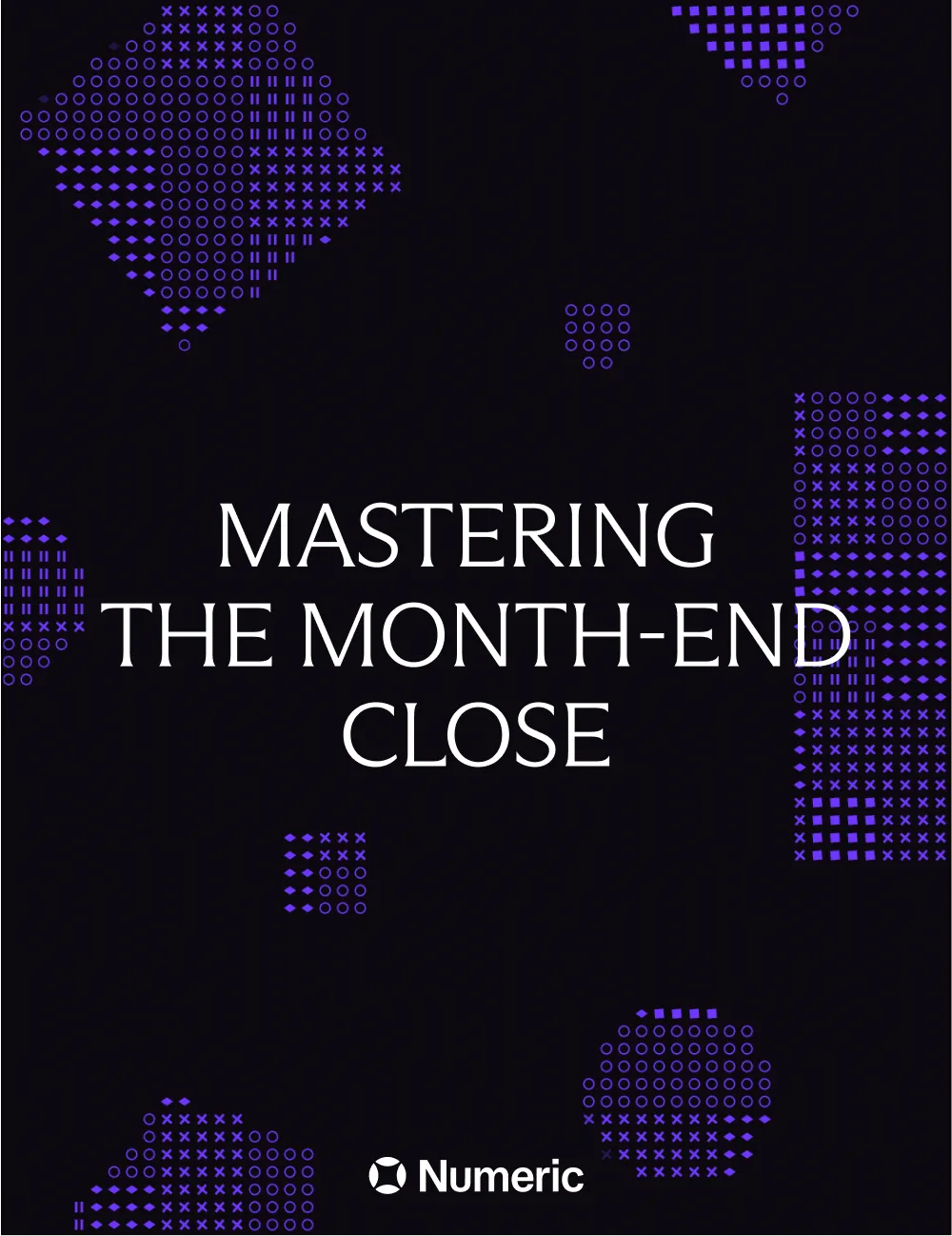

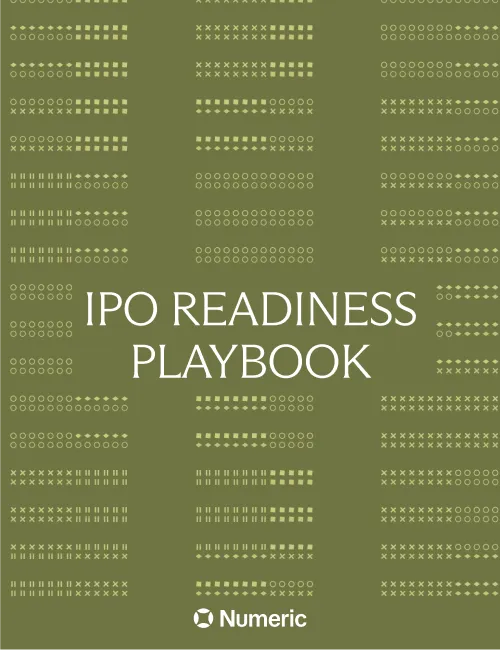

.png)
.png)
.png)